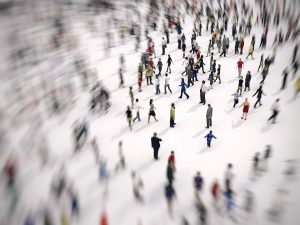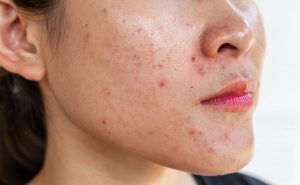TUESDAY, Sept. 29, 2020 (Healthday News) — The global coronavirus pandemic reached a grim new milestone on Tuesday: One million dead.
Americans made up more than 200,000 of those deaths, or one in every five, according to a running tally comprised by Johns Hopkins University.
“It’s not just a number. It’s human beings. It’s people we love,” Dr. Howard Markel, a professor of medical history at the University of Michigan, told the Associated Press. He’s an adviser to government officials on how best to handle the pandemic — and he lost his 84-year-old mother to COVID-19 in February.
“It’s people we know,” Markel said. “And if you don’t have that human factor right in your face, it’s very easy to make it abstract.”
It’s taken the newly emerged SARS-CoV-2 virus just 8 months to reach a worldwide death toll that’s meant personal and economic tragedy for billions. Right now, more than 33 million people worldwide are known to have been infected with the new coronavirus, the Hopkins tally found.
In the meantime, Americans struggle to stay ahead of the virus. The U.S. government announced Monday that at least 100 million rapid COVID-19 tests will be distributed to states in the coming weeks.
Who will get them first? The White House is urging governors to use the tests to help reopen schools, the Associated Press reported.
As an example, the Abbott Labs tests would allow teachers to be tested on a weekly basis, or for parents to know whether their symptomatic child has COVID-19, the AP reported.
This batch of tests are part of a 150 million order the federal government has placed with Abbott, the wire service said. The company’s rapid test, the size of a credit card, is the first that does not require special computer equipment to process. It delivers results in about 15 minutes.
As the rapid tests are being sent out, new COVID-19 cases remain elevated averaging more than 40,000 a day — while experts warn of a likely surge in the fall and winter, AP reported.
Only in the last two months has U.S. testing capacity begin to exceed demand, the AP reported. Adm. Brett Giroir, the nation’s testing czar, told Congress last week that the United States will soon have the capacity to run 3 million tests per day.
Quick and cheap
Abbott’s test is an important advance because of its low cost ($5 a test) and convenience, the wire service said. Until now, the vast majority of coronavirus tests had to be sent to labs for processing that typically took several days. Backlogs led to repeated delays in reporting results, particularly during a huge summer spike in cases.
Still, rapid tests are less accurate and positive results often need to be confirmed with lab tests. Additionally, because the tests are often performed outside the health care system, state officials have warned that many tests might go unreported, the AP reported.
“What we’re hearing from the states is that they don’t know where these tests are being done,” Dr. Jeffrey Engel, of the Council of State and Territorial Epidemiologists, told the wire service recently. He warned that schools generally do not have the capacity or expertise to report mass testing results, which could artificially lower infection counts sent to state and federal officials.
Right now, Abbott is ramping up production of its rapid tests, which will be produced in two factories, one in Maine and one in Illinois, the wire service said.
The promise of “herd immunity” to help slow the pandemic seems remote: A new U.S. study found that less than 10 percent of Americans have antibodies to COVID-19 in their systems.
The percentages varied by region — averaging 3.5% in the West to 27% in the Northeast, according to researchers at Stanford University. They put the national average of Americans with antibodies to SARS-CoV-2 at 9.3%.
“This research clearly confirms that despite high rates of COVID-19 in the United States, the number of people with antibodies is still low and we haven’t come close to achieving herd immunity. Until an effective vaccine is approved, we need to make sure our more vulnerable populations are reached with prevention measures,” study co-author Dr. Julie Parsonnet, a professor of medicine at Stanford, said in a news release from the medical journal The Lancet.
In the study, published in the journal Sept. 25 , scientists led by Stanford’s Dr. Shuchi Anand analyzed blood plasma samples from more than 28,500 patients receiving dialysis in July at approximately 1,300 facilities in 46 states run by one lab.
Overall, the percentage of dialysis patients who were positive for antibodies among those sampled was 8%. But since dialysis patients aren’t representative of the entire U.S. population, the researchers standardized the results with respect to age, sex, race and ethnicity and region.
While seven states had 0% of patients having antibodies, New York topped the list with 33%.
The scientists also saw racial and economic differences in antibody rates: Compared to the whites, residents of predominantly Black and Hispanic neighborhoods were two to three times more likely to have antibodies, people living in poorer areas were two times more likely and those living in the most densely populated areas were 10 times more likely.
The number of U.S. coronavirus cases passed 7 million on Friday, with California the hardest hit state so far in a pandemic that has crippled the country for more than six months.
The United States has been averaging about 41,500 cases daily, down from the pandemic’s midsummer peak, but states in the Midwest and West are seeing case numbers climb, The New York Times reported.
It was less than a month ago that the United States reached 6 million cases, the Times reported. It took over three months for the country to record its first million cases.
One-shot vaccine moves to larger trials
In news that might help make vaccinating all Americans against COVID-19 more easy to accomplish, the first coronavirus vaccine that only requires a single shot has entered the final stages of testing in the United States, the Post reported.
The international trial will eventually recruit up to 60,000 participants. The vaccine, made by Johnson & Johnson, is the fourth to enter the large, Phase 3 trials that determine effectiveness and safety, the Post reported.
Paul Stoffels, the company’s chief scientific officer, predicted on Tuesday there may be enough data to have results by the end of the year and the company plans to manufacture 1 billion doses next year.
Three other vaccine candidates have a head start, with U.S. trials that began earlier this summer, but the vaccine being developed by Johnson & Johnson could be easier to administer and distribute if it’s proven safe and effective, the Post reported.
The company is initially testing a single dose, while the other vaccines require a second shot three to four weeks after the first one, the newspaper said. The Johnson & Johnson vaccine can also be stored in liquid form at refrigerator temperatures for three months, whereas two of the three other vaccines must be frozen or kept at ultra-cold temperatures for long-term storage, the Post reported.
“A single-shot vaccine, if it’s safe and effective, will have substantial logistic advantages for global pandemic control,” said Dan Barouch, director of the Center for Virology and Vaccine Research at Beth Israel Deaconess Medical Center in Boston, who partnered with Johnson & Johnson to develop the vaccine.
“It is a really good thing that we have this diversity of platforms because this is a critical crisis in terms of our global circumstance,” said Dr. Francis Collins, director of the U.S. National Institutes of Health. “Now, here in the U.S. with 200,000 deaths, we want to do everything we can without sacrificing safety or efficacy.”
Cases keep mounting
By Tuesday, the U.S. coronavirus case count passed 7.1 million and the death toll neared 205,000, according to a Times tally.
According to the same tally, the top five states in coronavirus cases as of Tuesday were: California with over 814,700; Texas with more than 773,600; Florida with more than 701,000; New York with over 461,000; and Georgia with nearly 299,000.
Curbing the spread of the coronavirus in the rest of the world remains challenging.
By Tuesday, India’s coronavirus case count had passed 6.1 million, just over one month after hitting the 3 million mark, the Times reported.
More than 96,000 coronavirus patients have died in India, but when measured as a proportion of the population, the country has had far fewer deaths than many others. Doctors say this reflects India’s younger and leaner population.
Still, the country’s public health system is severely strained, and some sick patients cannot find hospital beds, the newspaper said. Only the United States has more coronavirus cases.
Meanwhile, Brazil passed 4.7 million cases and more than 142,000 deaths as of Tuesday, a Johns Hopkins tally showed.
Cases are also spiking in Russia: The country’s coronavirus case count has passed 1.1 million. As of Monday, the death toll in Russia was over 20,456, the Hopkins tally showed.
More information
The U.S. Centers for Disease Control and Prevention has more on the new coronavirus.
Copyright © 2025 HealthDay. All rights reserved.

























-300x200.jpg)